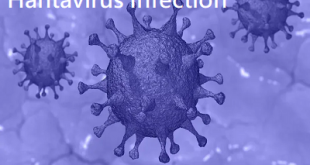Overview – Rubella
Rubella is commonly known as German measles or 3-day measles — is an infection that mostly affects the skin and lymph nodes. It is caused by the rubella virus (not the same virus that causes measles).
German measles spreads when people breathe in virus-infected fluid, such as the droplets sprayed into the air when a person with german measles sneezes or coughs, or share food or drink with someone who’s infected. It also can pass through a pregnant woman’s bloodstream to infect her unborn child.
It’s a generally mild disease in children; the primary medical danger of german measles is the infection of pregnant women because it can cause congenital rubella syndrome in developing babies.
Before a vaccine against german measles became available in 1969, german measles epidemics happened every 6-9 years, usually among kids 5 to 9 years old, along with many cases of congenital rubella. Thanks to immunization, there are far fewer cases of rubella and congenital rubella.
Most german measles infections today appear in young, non-immunized adults rather than in kids. In fact, experts estimate that 10% of young adults are currently susceptible to german measles, which could pose a danger to any children they might have someday.
Pathophysiology of Rubella
Postnatal rubella
The usual portal of entry of the rubella virus is the respiratory epithelium of the nasopharynx. The virus is transmitted via the aerosolized particles from the respiratory tract secretions of infected individuals. The virus attaches to and invades the respiratory epithelium. It then spreads hematogenously (primary viremia) to regional and distant lymphatics and replicates in the reticuloendothelial system. This is followed by a secondary viremia that occurs 6-20 days after infection. During this viremic phase, the rubella virus can be recovered from different body sites including lymph nodes, urine, cerebrospinal fluid (CSF), conjunctival sac, breast milk, synovial fluid, and lungs. Viremia peaks just before the onset of rash and disappear shortly thereafter. An infected person begins to shed the virus from the nasopharynx 3-8 days after exposure for 6-14 days after onset of the rash.
Congenital rubella syndrome
Fetal infection occurs transplacentally during the maternal viremic phase, but the mechanisms by which the rubella virus causes fetal damage are poorly understood. The fetal defects observed in congenital rubella syndrome are likely secondary to vasculitis resulting in tissue necrosis without inflammation. Another possible mechanism is direct viral damage to infected cells. Studies have demonstrated that cells infected with german measles in the early fetal period have reduced mitotic activity. This may be the result of chromosomal breakage or due to the production of a protein that inhibits mitosis. Regardless of the mechanism, any injury affecting the fetus in the first trimester (during the phase of organogenesis) results in congenital organ defects.
Causes of Rubella
German measles is caused by a virus that is spread through the air or by close contact.
A person with german measles may spread the disease to others from 1 week before the rash begins, until 1 to 2 weeks after the rash disappears.
Because the measles-mumps-rubella (MMR) vaccine is given to most children, german measles is much less common now. Almost everyone who receives the vaccine has immunity to German measles. Immunity means that your body has built a defense against the rubella virus.
In some adults, the vaccine may wear off. This means they are not fully protected. Women who may become pregnant and other adults may receive a booster shot.
Children and adults who were never vaccinated against german measles may still get this infection.
Who is at risk for German measles?
Most cases of German measles occur in people who live in countries that don’t offer routine immunization against german measles.
The rubella vaccine is usually given to children when they’re between 12 and 15 months old, and then again when they’re between ages 4 and 6. This means that infants and young toddlers who haven’t yet received all vaccines have a greater risk of getting German measles.
To avoid complications during pregnancy, many women who become pregnant are given a blood test to confirm immunity to German measles. It’s important to contact your doctor immediately if you’ve never received the vaccine and think you might have been exposed to German measles.
Symptoms of Rubella
Rubella means “little red” and the disease features a red rash, “rubella” is Latin for “little red.”
Symptoms normally appear 14 to 21 days after infection.
The rash often starts on the face and moves to the trunk and limbs. After 3 to 5 days, it fades and disappears. It can be itchy.
Other symptoms include:
- A stuffy or runny nose
- Headache
- A mild fever
- Red, inflamed eyes
- Nerve inflammation
- Enlarged and tender lymph nodes
- Aching joints
Though the infection can happen at any age, german measles rarely affects young infants or people over 40 years. A person who is infected with German measles at an older age will normally have more severe symptoms.
Complications
Up to 70% of women who get german measles may experience arthritis; this is rare in children and men. In rare cases, german measles can cause serious problems, including brain infections and bleeding problems.
The most serious complication from german measles infection is the harm it can cause a pregnant woman’s developing baby. If an unvaccinated pregnant woman gets infected with the rubella virus she can have a miscarriage, or her baby can die just after birth. Also, she can pass the virus to her developing baby who can develop serious birth defects such as:
- Heart problems,
- Loss of hearing and eyesight,
- Intellectual disability, and
- Liver or spleen damage.
Serious birth defects are more common if a woman is infected early in her pregnancy, especially in the first trimester. These severe birth defects are known as congenital rubella syndrome (CRS).
Complications are rare with german measles in healthy infants. Complications can include:
- Arthralgia or arthritis in adults
- Thrombocytopenic purpura
- Otitis media
Diagnosis and Test?
If a woman is pregnant and she may have come into contact with german measles, she should see a doctor at once.
It is best to call the doctor’s office first, as they may wish to schedule an appointment at a time when there is the least chance of passing the virus on.
If there are no symptoms, a diagnosis is made by testing a saliva or blood sample. If IgM antibodies are present, this may indicate a new german measles infection.
If IgG antibodies are present, they indicate that a german measles infection has either been present in the past or the individual has already been vaccinated.
If neither antibody is present, the individual does not carry the virus and has never been immunized.
Treatment
No treatment will shorten the course of rubella infection, and symptoms are often so mild that treatment usually isn’t necessary. However, doctors often recommend isolation from others — especially pregnant women — during the infectious period.
If you contract German measles while you’re pregnant, discuss the risks to your baby with your doctor. If you wish to continue your pregnancy, you may be given antibodies called hyperimmune globulin that can fight off the infection. This can reduce your symptoms, but doesn’t eliminate the possibility of your baby developing congenital rubella syndrome.
Support of an infant born with congenital rubella syndrome varies depending on the extent of the infant’s problems. Children with multiple complications may require early treatment from a team of specialists.
Lifestyle and home remedies
In rare instances when a child or adult is infected with German measles, simple self-care measures are required:
- Rest in bed as necessary.
- Take acetaminophen (Tylenol, others) to relieve discomfort from fever and aches.
- Tell friends, family, and co-workers — especially pregnant women — about your diagnosis if they may have been exposed to the disease.
- Avoid people who have conditions that cause deficient or suppressed immune systems.
- Tell your child’s school or child care provider that your child has German measles.
Prevention
- Exclude people with german measles from childcare, preschool, school, and work until fully recovered or for at least 4 days after the onset of the rash.
- Rubella is best prevented by the measles, mumps and
- Rubella (MMR) combination vaccine or the measles, mumps, German measles, and varicella (MMRV) combination vaccine. Most people who have two doses of a rubella-containing vaccine will be protected against German measles infection.
- Vaccination after exposure will not prevent infection.
- All health care and childcare staff (men and women) should be assessed for immunity to German measles and if not immune, should be immunized.
- Anyone with suspected german measles should consult a doctor both to check that the diagnosis is correct and so that contacts (in particular, pregnant women) can be advised. A contact is any person who has been close enough to an infected person to be at risk of having acquired the infection from that person.
Pregnant women
In addition to the above prevention points, all pregnant women:
- Should be tested for immunity to German measles prior to, or during early pregnancy. If found not to be immune, MMR vaccination is given after delivery of the baby but before discharge from the maternity unit. Rubella vaccine should not be given to a woman known to be pregnant and pregnancy should be avoided for one month after vaccination.
- With suspected german measles or exposure to german measles should seek specialist obstetric advice, regardless of a history of german measles or rubella vaccination. german measles re-infection, often without symptoms, can occur in individuals who have had previous infection or vaccination, although fetal damage is very rare in these cases.
The vaccine to prevent german measles
Getting vaccinated is the best way to prevent german measles. And when enough people get vaccinated against German measles, the entire community is less likely to get it. So when you and your family get vaccinated, you help keep yourselves and your community healthy.
There are 2 vaccines that can prevent german measles:
- The MMR vaccine protects children and adults from German measles and mumps
- The MMRV vaccine protects children from german measles, measles, mumps, and chickenpox
Who needs to get the rubella vaccine?
All children need to get the vaccine — and some adults may need it, too.
Children: Children ages 1 through 6 years need to get the rubella vaccine as part of their routine vaccine schedule.
Children need 2 doses of the vaccine at the following ages:
- 12 through 15 months for the first dose
- 4 through 6 years for the second dose (or sooner as long as it’s 28 days after the first dose)
Children ages 1 through 12 years can get the MMRV vaccine, which is a combination vaccine. The MMRV vaccine protects against measles, mumps, rubella, and chickenpox. Your child’s doctor can recommend the vaccine that’s right for your child.
Adults: Adults may need to get the rubella vaccine if they didn’t get it as a child. In general, everyone age 18 and older born after 1956 who has not had rubella needs at least 1 dose of the rubella vaccine.
What are the side effects of the rubella vaccine?
Side effects are usually mild and go away in a few days. They may include:
- Fever
- Mild rash
- Swollen glands in the cheeks or neck
Less common side effects of the vaccine include:
- Pain or stiffness in the joints, usually in women (up to 1 person out of 4)
- Seizures (sudden, unusual movements or behavior) from having a high fever (about 1 out of every 3,000 doses)
- Temporary (short-term) low platelet count (about 1 out of every 30,000 doses)
Like any medicine, there’s a very small chance that the german measles vaccine could cause a serious reaction.
 Diseases Treatments Dictionary This is complete solution to read all diseases treatments Which covers Prevention, Causes, Symptoms, Medical Terms, Drugs, Prescription, Natural Remedies with cures and Treatments. Most of the common diseases were listed in names, split with categories.
Diseases Treatments Dictionary This is complete solution to read all diseases treatments Which covers Prevention, Causes, Symptoms, Medical Terms, Drugs, Prescription, Natural Remedies with cures and Treatments. Most of the common diseases were listed in names, split with categories.







